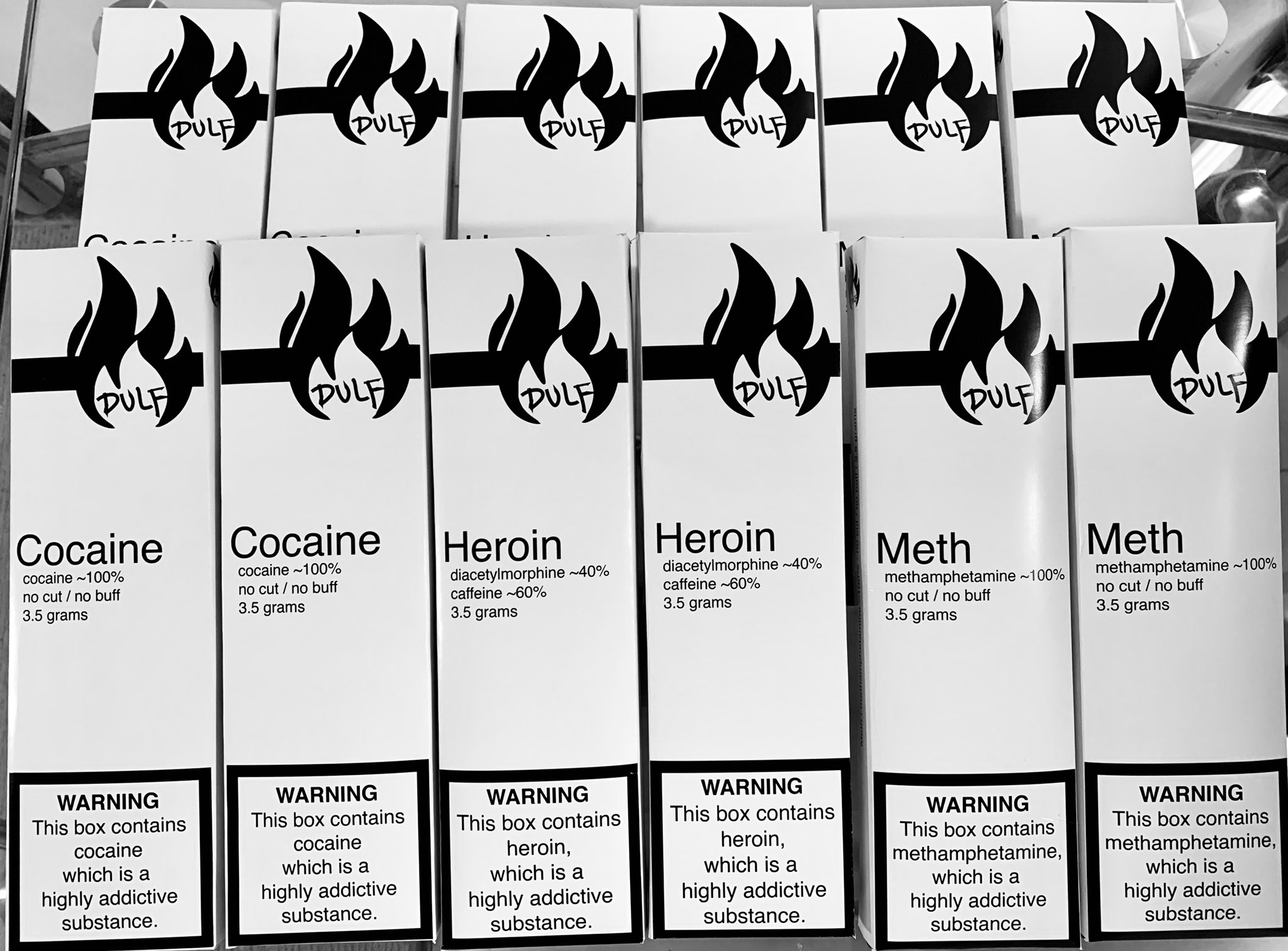On July 14 Jean Swanson, a city councillor of Vancouver, British Columbia (BC), helped to hand out free heroin during a protest downtown. She joined a group anti-drug war activists who are demanding that BC create a true safe supply of drugs.
Members of the Drug User Liberation Front (DULF) and the Vancouver Area Network of Drug Users (VANDU) hosted the public demonstration outside the Vancouver Police Department. They handed out free boxes of “clean” heroin, methamphetamine and cocaine. The cocaine boxes, for example, read: “Cocaine ~100%, no cut / no buff. 3.5 grams. Warning: This box contains cocaine which is a highly addictive substance.”
“Knowing what and how much is key to safety,” DULF wrote. “Unpredictable supply is fuelling BC’s overdose crisis. Labeling shown [above] will save lives.”
Swanson shared photos on Twitter of herself handing out a box of heroin. “Six deaths a day from poison drugs is way too many,” she wrote. “One is too many. Safe supply now!” She urged “government action so everyone can get safe drugs and no one dies.”
DULF conducted a similar action in June 2020, as Filter reported.
Predictably, the latest event provoked some pushback, including from one of Swanson’s City Council colleagues. “Isn’t this called drug trafficking?” wrote City Councillor Melissa De Genova.
But there’s a much bigger issue at stake. Health officials confirmed 2020 as the worst ever year for illicit drug overdose deaths in BC, with over 1,700 lives lost—close to double the number in 2019. More than 80 percent of drug overdoses involved the highly potent synthetic opioid fentanyl, which, along with its analogs, is present in many street supplies of drugs like heroin and cocaine.
The urgent need to remove this additional risk is why drug-user advocates—and finally, some government officials—are supporting a safe supply. But the reality of such models can be different from what advocates are demanding.
Since 2019, the Canadian health ministry has helped fund a series of different pilot safe supply programs throughout the country. Programs of this kind are currently administered by doctors. Participants need to obtain a prescription for the drug they want, and may also need to participate in health assessments, case management and monitoring.
The most common drug provided by these programs is hydromorphone (generic Dilaudid). Other programs prescribe methylphenidate (a stimulant), diazepam (an anxiolytic) or diacetylmorphine (heroin). Prescribing these drugs is legal, although with some significant limitations.
The BC provincial government took emergency measures last year to increase safe supply, allowing doctors to more easily prescribe certain drugs to people who were at risk of or infected by COVID-19, and to people with a history of substance use disorder. It also allowed for home delivery and telemedicine, when appropriate, to allow people to get their drugs while social distancing. The new guidelines dramatically increased prescriptions of hydromorphone to drug users. In one year, the number of people who received hydromorphone as a replacement for illicit drugs jumped from 677 to over 3,300.
“We need to be looking at non-medical pathways to safer supply.”
However, advocates and experts have raised several issues with this program. First, there is nowhere near enough safe supply for everyone who needs it. Of an estimated 77,000 BC residents with opioid use disorder, about 50,000 who can’t access hydrocodone—or methadone or buprenorphine—have no option besides the dangerous unregulated market.
Many physicians also lack proper information or experience working with this population. They may refuse to prescribe higher dosages of hydromorphone, for example, creating a barrier for people with such a need.
“We do need to recognize the limitations of a prescriber-based approach,” Cheyenne Johnson, director of the BC Center for Substance Use, told Filter. “There are a limited number of clinicians in British Columbia who are trained in addiction medicine, particularly in rural and remote communities.”
“Importantly, many people who use drugs don’t access the health system for a variety of reasons, including marginalization, discrimination, and [living in remote areas],” she continued. “So we need to be looking at non-medical pathways to safer supply, using a regulatory framework much like we do for alcohol, cannabis and tobacco that limits access while shifting the supply chain away from organized crime and related harms.”
Another major issue with BC’s program is that for many people, hydromorphone is simply not an adequate substitute. Because fentanyl has so thoroughly penetrated street drug supplies, many people with high opioid tolerance need more potent options. In some cases, people are picking up hydromorphone pills and then selling them in order to raise the money to buy fentanyl.
In other words, inadequate safe supply options leave people still being pushed toward the illicit market. For this reason, advocates are demanding that the program include fentanyl in patch or injection form. In 2019, the BC Center for Substance Use also proposed heroin buyers clubs, where members could pool resources to obtain Swiss medical-grade heroin.
“Pharmaceutical safe supply would be great if barriers to access were removed,” wrote DULF. “Safe supply cannot be in the hands of the medical system. Case in point, BC Risk Mitigation Guidelines.”
The criminalization of drugs, as usual, is making everything worse. In November 2020, Vancouver City Council formally began a process to decriminalize drug possession by asking the federal government for a special exemption from controlled substances law. It submitted a final proposal in May, which if adopted would remove criminal penalties for people caught with small amounts of illicit drugs by police. They would instead be offered voluntary treatment services, and their drugs would not be taken from them.
But drug-user advocates have criticized the plan for setting the permitted personal-use thresholds too low. They also criticized the Mayor for drafting the proposal behind closed doors, excluding impacted communities. In response, Mayor Kennedy Stewart has acknowledged the proposal can be improved, adding “however it does open the door to real action, and unless we open that door, nothing is going to happen.”
Photograph by the Drug User Liberation Front via Twitter.





Show Comments